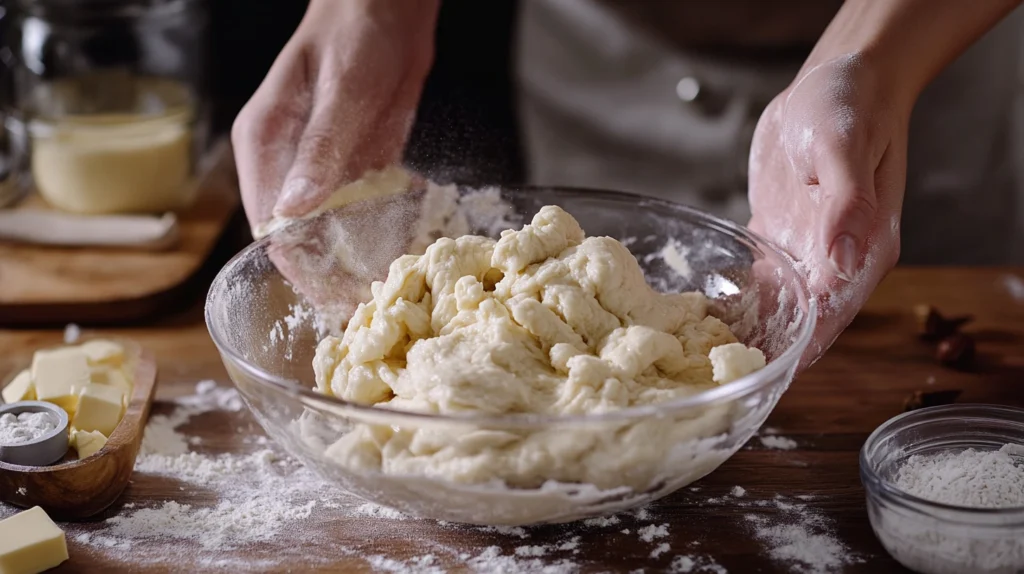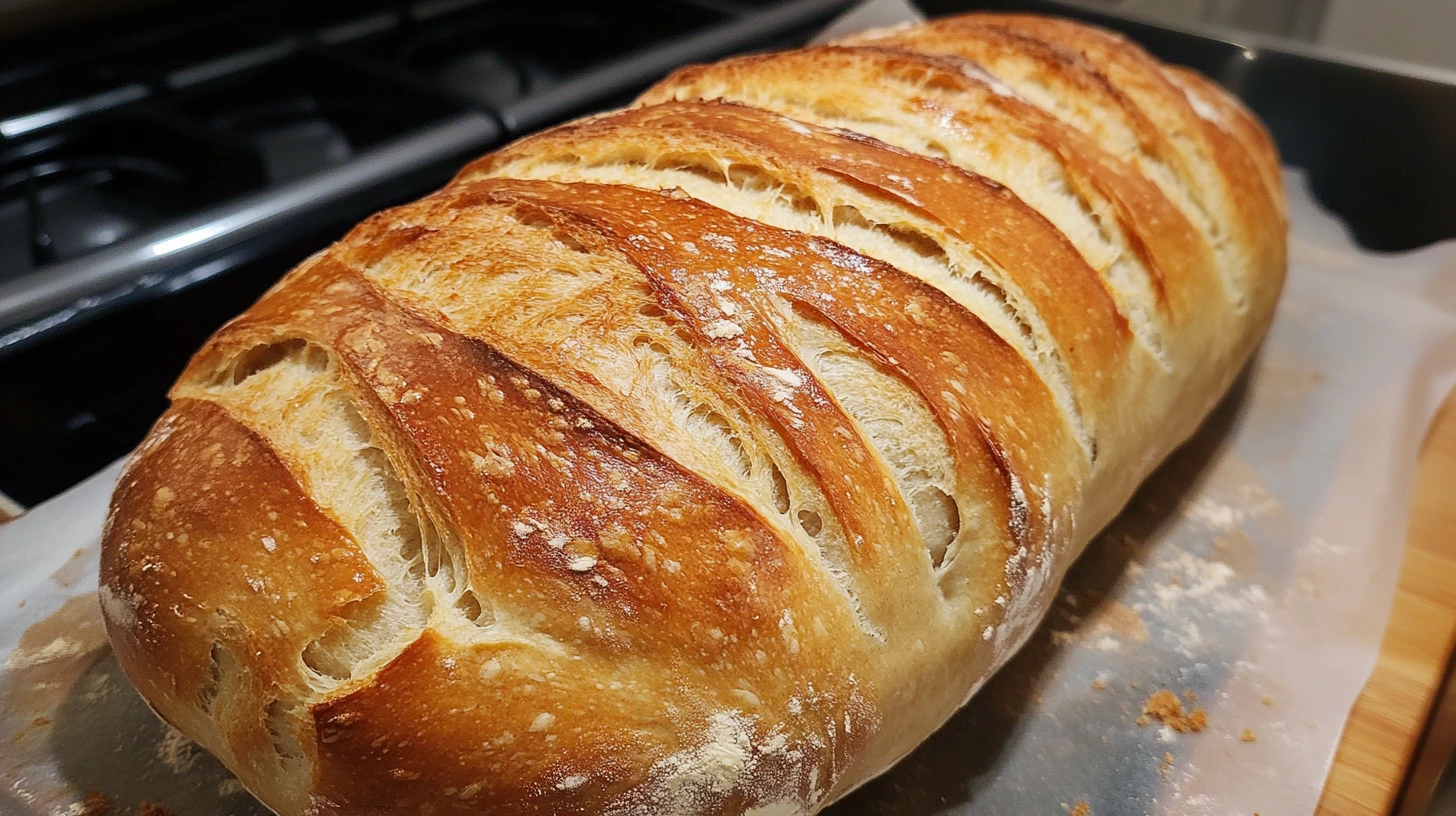Table of Contents
There’s nothing quite like the smell of freshly baked sandwich bread filling your kitchen. Whether you’re a seasoned baker or just starting out, mastering a sandwich bread recipe is a skill worth having. Not only does it save you trips to the store, but it also lets you enjoy bread that’s soft, flavorful, and free from preservatives.
In this guide, we’ll walk you through everything you need to know about creating the perfect sandwich bread recipe. From essential ingredients to step-by-step instructions and expert tips, you’ll learn how to bake bread that’s perfect for sandwiches, toast, or simply slathering with butter.
So, roll up your sleeves, dust off your apron, and let’s dive into the wonderful world of homemade sandwich bread!
Introduction to Sandwich Bread
What Makes Sandwich Bread Unique?
When you think of sandwich bread, what comes to mind? Soft, fluffy slices that hold up to your favorite fillings without falling apart, right? Unlike artisan loaves or crusty baguettes, sandwich bread is designed to be tender and sturdy. Its fine crumb and mild flavor make it the perfect canvas for everything from peanut butter and jelly to hearty turkey sandwiches.
The secret lies in its texture. Sandwich bread is typically made with a higher fat content (think butter or oil) and a touch of sweetness (like honey or sugar), which keeps it soft and moist. It’s also baked in a loaf pan, giving it that uniform shape we all know and love.
Why Homemade Sandwich Bread is Worth the Effort
Sure, you can grab a loaf from the store, but nothing beats the satisfaction of baking your own bread. For starters, homemade sandwich bread is fresher and free from the preservatives found in store-bought versions. Plus, you can customize it to suit your taste—add a sprinkle of herbs, a dash of honey, or even swap in whole wheat flour for a healthier twist.
Baking bread at home might seem intimidating, but trust me, it’s easier than you think. With a little patience and the right guidance, you’ll be pulling golden, fragrant loaves out of your oven in no time. And let’s be honest—there’s nothing quite like the pride of slicing into a loaf you made yourself.
So, why settle for store-bought when you can create something truly special? Let’s get started on your journey to baking the perfect sandwich bread recipe!
Essential Ingredients for Sandwich Bread
The Role of Flour in Sandwich Bread
When it comes to baking the perfect sandwich bread recipe, flour is the backbone of your dough. The type of flour you use can make or break your loaf. All-purpose flour is a popular choice because it strikes a balance between protein content and ease of use, giving your bread a soft yet sturdy texture. If you’re aiming for a chewier crumb, bread flour is your best bet—it has a higher protein content, which helps create more gluten.
For a healthier twist, whole wheat flour is a great option. However, it can make your bread denser, so many bakers mix it with all-purpose flour to keep things light. No matter which flour you choose, make sure it’s fresh and properly measured for the best results.
Yeast: The Key to Perfect Rise
Yeast is the magic ingredient that makes your bread rise and gives it that airy, fluffy texture. There are three main types of yeast: active dry yeast, instant yeast, and fresh yeast. Active dry yeast needs to be dissolved in warm water before use, while instant yeast can be mixed directly into the dough. Fresh yeast, though less common, is a favorite among professional bakers for its reliability.
To activate yeast, use warm water (around 110°F)—too hot, and you’ll kill it; too cold, and it won’t wake up. A pinch of sugar can help feed the yeast and speed up the process. If your yeast doesn’t bubble after 10 minutes, it’s likely dead, and you’ll need to start over.
Liquids: Water, Milk, or Buttermilk?
Liquids play a crucial role in hydrating your dough and developing its texture. Water is the simplest option, but milk adds richness and softness to your bread. For an even tangier flavor, try buttermilk—it also helps tenderize the crumb.
If you’re out of milk, don’t worry! You can substitute it with water or even plant-based alternatives like almond or oat milk. Just keep in mind that the type of liquid you use will affect the flavor and texture of your sandwich bread recipe.
Fats and Sweeteners for Flavor and Softness
Fats like butter or oil add moisture and richness to your bread, making it softer and more flavorful. Similarly, sweeteners like honey or sugar not only enhance the taste but also help feed the yeast and promote browning.
If you’re looking for a healthier option, you can reduce the amount of fat or sugar, but keep in mind that this might affect the texture. A little goes a long way, so don’t skip these ingredients if you want that perfect, bakery-style loaf.
Step-by-Step Sandwich Bread Recipe
Preparing Your Dough
To start your sandwich bread recipe, gather all your ingredients and measure them accurately. In a large mixing bowl, combine your flour, yeast, salt, and any dry sweeteners. Then, add your warm liquid and fat, mixing until a shaggy dough forms.
If you’re using a stand mixer, attach the dough hook and mix on low speed for about 2 minutes. For hand mixing, use a wooden spoon or your hands to bring the dough together. The key is to ensure all the ingredients are evenly incorporated before moving on to kneading.
Kneading Techniques for Soft Sandwich Bread

Kneading is where the magic happens—it develops the gluten, giving your bread its structure and chew. If you’re using a stand mixer, knead on medium speed for about 8-10 minutes. For hand kneading, lightly flour your surface and push the dough away from you with the heel of your hand, then fold it back and repeat.
You’ll know your dough is ready when it’s smooth, elastic, and springs back when poked. Over-kneading can make your bread tough, so stop once you’ve achieved the right consistency.
First Rise: Letting the Dough Rest
Once your dough is kneaded, place it in a lightly greased bowl, cover it with a damp towel or plastic wrap, and let it rise in a warm, draft-free spot. This first rise usually takes about 1-2 hours, depending on the temperature of your kitchen.
The dough is ready when it has doubled in size. To test, gently press your finger into the dough—if the indentation remains, it’s proofed enough.
Shaping and Second Rise
After the first rise, punch down the dough to release any air bubbles. Turn it out onto a floured surface and shape it into a loaf by flattening it into a rectangle, then rolling it tightly from one end. Pinch the seams to seal and place it seam-side down in a greased loaf pan.
Cover the loaf and let it rise again for about 30-45 minutes. This second rise ensures your bread will be light and airy.
Baking Your Sandwich Bread to Perfection
Preheat your oven to 375°F (190°C) while the dough is rising. Once the loaf has puffed up slightly above the rim of the pan, it’s ready to bake. Place it in the center of the oven and bake for 30-35 minutes, or until the top is golden brown.
To check for doneness, insert an instant-read thermometer into the center of the loaf—it should read 190°F (88°C). Alternatively, tap the bottom of the loaf; if it sounds hollow, it’s done.
Let the bread cool in the pan for 10 minutes, then transfer it to a wire rack to cool completely before slicing. And there you have it—a perfect homemade sandwich bread recipe that’s soft, flavorful, and utterly satisfying!
Tips and Tricks for the Best Sandwich Bread
Common Mistakes to Avoid
Even the best bakers can run into trouble when making a sandwich bread recipe. One common mistake is over-kneading the dough, which can make your bread tough and dense. On the flip side, under-kneading can result in a loaf that doesn’t hold its shape. To avoid this, aim for a smooth, elastic dough that springs back when poked.
Another pitfall is under-proofing or over-proofing your dough. If it doesn’t rise enough, your bread will be dense; if it rises too much, it might collapse in the oven. Keep an eye on the dough during both rises, and use the finger test to check if it’s ready.
Lastly, don’t skip the cooling step! Cutting into your bread too soon can make it gummy. Let it cool completely on a wire rack for the best texture.
How to Store Sandwich Bread for Freshness
Nothing beats the taste of freshly baked bread, but if you want it to stay soft and delicious, proper storage is key. Once your bread has cooled, wrap it tightly in plastic wrap or place it in a resealable bag. Store it at room temperature for up to 3 days.
For longer storage, you can freeze your bread. Slice it first, so you can grab individual pieces as needed. Wrap the slices in foil or plastic wrap, then place them in a freezer-safe bag. When you’re ready to enjoy, simply toast the frozen slices straight from the freezer.
Freezing and Reheating Homemade Bread
Freezing is a great way to extend the life of your sandwich bread recipe. To freeze a whole loaf, wrap it tightly in plastic wrap and then in foil. It will keep for up to 3 months. When you’re ready to eat, let it thaw at room temperature or warm it in the oven at 350°F (175°C) for 10-15 minutes.
If you’re reheating individual slices, a toaster or toaster oven works wonders. Just be careful not to overheat, as this can dry out the bread.
Variations of Sandwich Bread Recipes
Whole Wheat Sandwich Bread
For a healthier twist on your sandwich bread recipe, try using whole wheat flour. It adds a nutty flavor and boosts the fiber content. However, whole wheat flour can make the bread denser, so consider mixing it with all-purpose flour for a lighter texture. Start with a 50-50 ratio and adjust to your preference.
Gluten-Free Sandwich Bread
If you’re avoiding gluten, you can still enjoy homemade sandwich bread. Use a gluten-free flour blend and add xanthan gum to help bind the dough. Keep in mind that gluten-free bread tends to be denser, so don’t expect the same fluffy texture as traditional bread. For best results, follow a recipe specifically designed for gluten-free baking.
Sweet and Savory Flavors

Why stick to plain bread when you can add exciting flavors? For a sweet twist, mix in honey, cinnamon, or dried fruit. If you prefer savory bread, try adding herbs like rosemary or thyme, or mix in grated cheese for a rich, cheesy loaf. These variations are perfect for adding a personal touch to your sandwich bread recipe.
FAQs About Sandwich Bread
What is the difference between sandwich bread and regular bread?
Sandwich bread is specifically designed to be soft, fluffy, and sturdy enough to hold fillings without falling apart. It often contains more fat and sugar than regular bread, which gives it a tender crumb and mild flavor. Regular bread, on the other hand, can vary widely in texture and taste, from crusty baguettes to dense sourdough loaves.
What is the best bread to make sandwiches?
The best bread for sandwiches is one that’s soft yet sturdy, like a classic sandwich bread recipe. Its fine crumb and even texture make it ideal for layering with meats, cheeses, and spreads. If you’re feeling adventurous, you can also try whole wheat or gluten-free variations for a healthier twist.
Can you over-knead sandwich bread?
Yes, you can! Over-kneading can make your bread tough and dense by developing too much gluten. To avoid this, stop kneading once your dough is smooth, elastic, and springs back when poked.
What is the secret to making good bread?
The secret lies in patience and precision. Use fresh ingredients, measure accurately, and give your dough enough time to rise. Don’t rush the process—good bread takes time, but the results are worth it!
Conclusion – Mastering Your Sandwich Bread Recipe
Why Homemade Sandwich Bread is a Game-Changer
There’s nothing quite like the taste and aroma of freshly baked bread. By mastering a sandwich bread recipe, you can enjoy loaves that are softer, fresher, and more flavorful than anything you’d find at the store. Plus, you have the freedom to customize your bread with different flours, flavors, and add-ins.
Final Thoughts and Encouragement
Baking bread at home might seem daunting at first, but with practice, it becomes second nature. Start with a simple recipe, follow the steps carefully, and don’t be afraid to experiment. Remember, even the most experienced bakers had to start somewhere.
So, what are you waiting for? Grab your ingredients, preheat your oven, and start baking your way to the perfect sandwich bread recipe. Your taste buds—and your family—will thank you!

